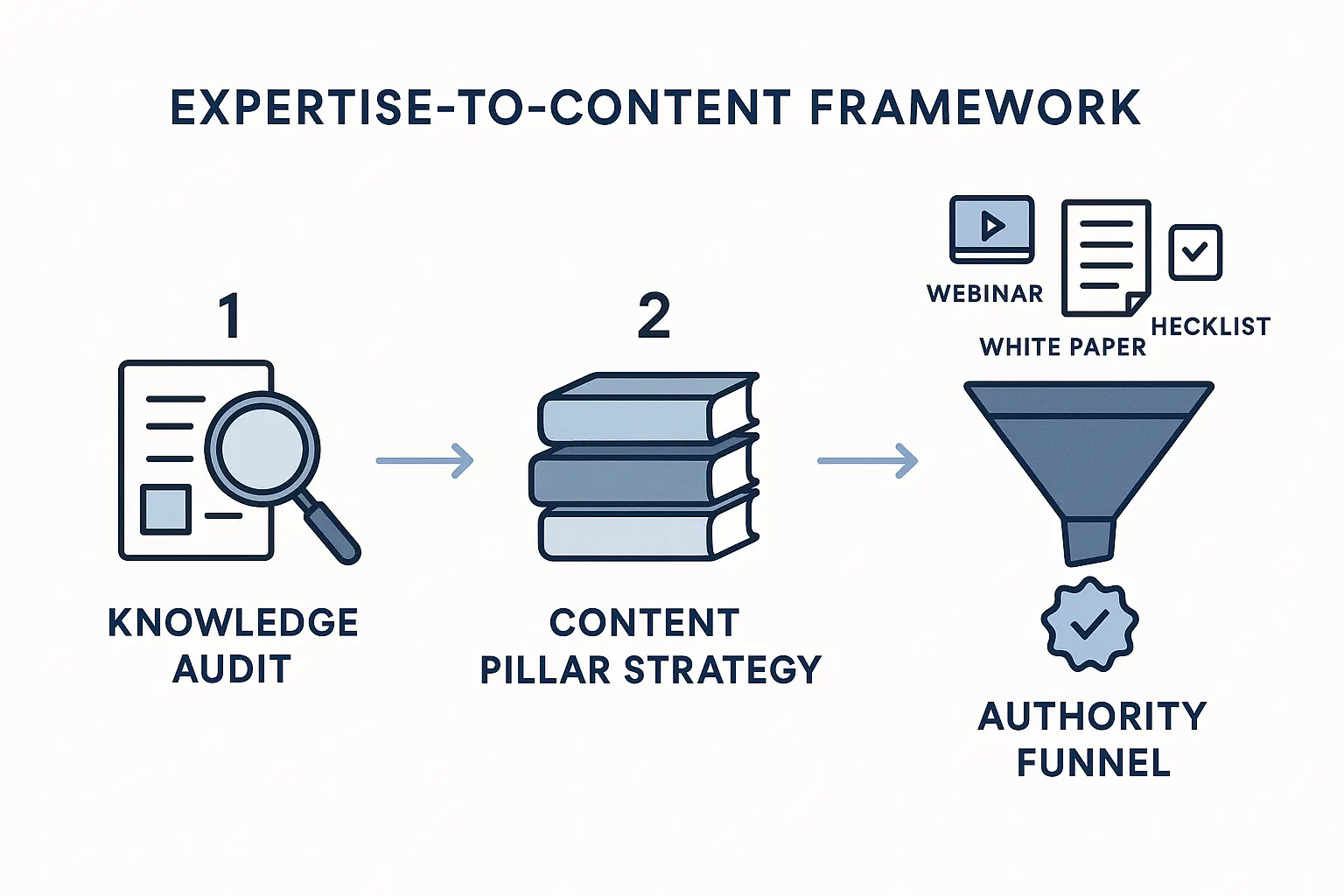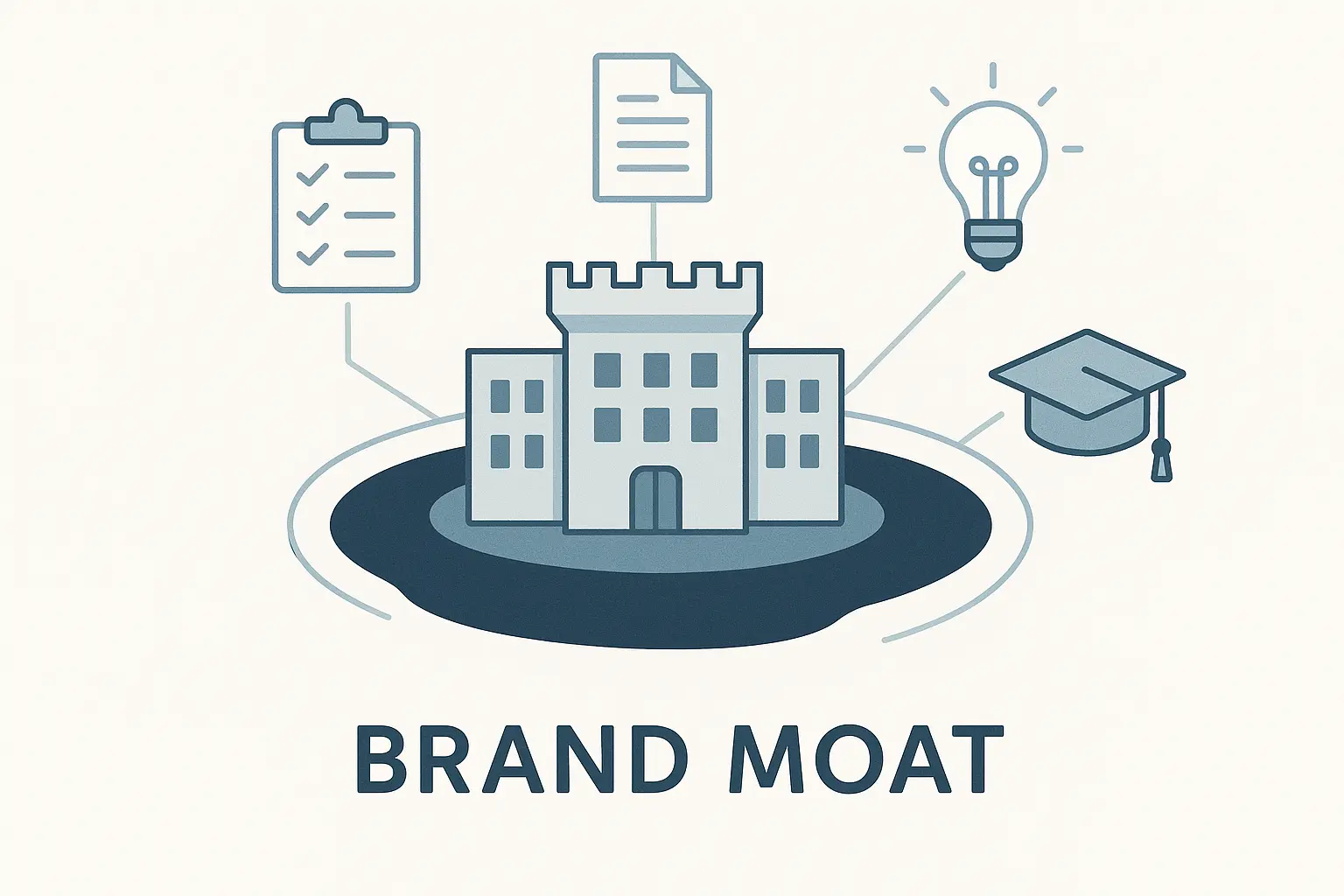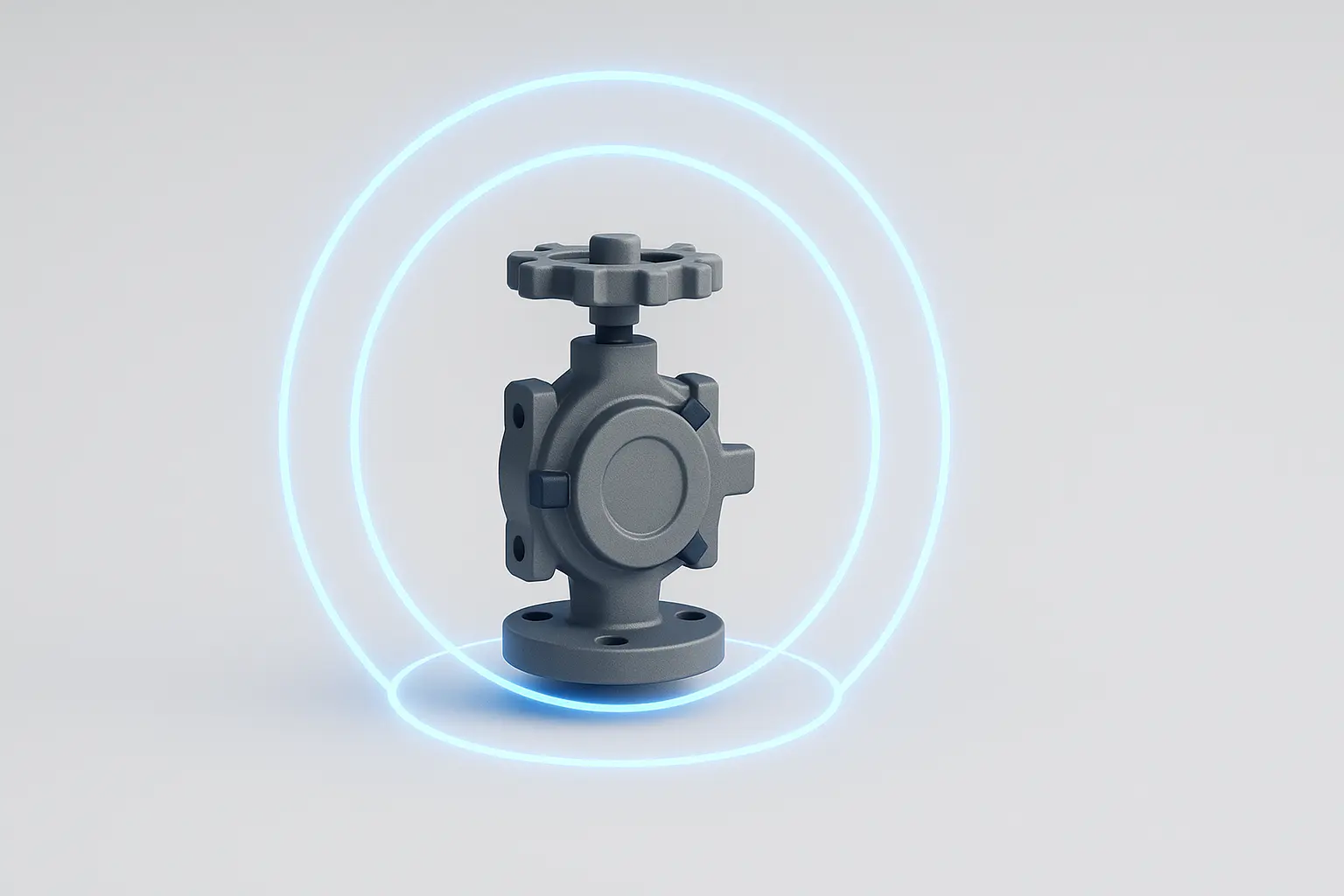You just landed a new client. They’re a leader in their field, the contracts are signed, and your team is ready to go. There’s just one hitch.
They manufacture… industrial-grade hydraulic fittings. Or enterprise-level compliance software. Or specialized adhesives for commercial construction.
Suddenly, the content strategy meetings feel a bit… quiet. How do you create compelling content for an industry that most people would call “boring”? How do you build a brand that people actively seek out when the product is something no one discusses at a dinner party?
It’s one of the most common—and misunderstood—challenges in marketing. The good news? These “unsexy” industries are often the most fertile ground for building an unshakeable brand moat. Why? Because nearly everyone else is doing it wrong.
They’re busy talking about themselves. You’re about to start talking about their customers’ problems. That simple shift makes all the difference.
The Myth of the ‘Boring’ Industry
Let’s reframe the problem. There are no boring industries, only boring marketing approaches. The typical mistake is to focus on the product, with articles titled “The Top 5 Features of Our New Ball Bearing” or “Why Our Adhesives Are a Game-Changer.”
The hard truth is, no one is searching for that.
Your client’s audience isn’t thinking about ball bearings. They’re thinking about machine downtime, production quotas, and the catastrophic cost of equipment failure. That’s where your content needs to live.
The data is clear: a massive 89% of B2B buyers use the internet during their research process. They are actively looking for answers. But what are they looking for? Research shows that 71% of B2B buyers start their journey with a generic, unbranded search. They aren’t typing in “Acme Corp Model X Fitting”; they’re searching for “how to prevent hydraulic leaks in high-pressure systems.”
This is your opening. The “boring” details of your client’s product are the ingredients for the solutions their customers desperately need. Your job isn’t to make the product sexy; it’s to make the customer feel seen, understood, and empowered.
The ‘Problem-First’ Framework: Your Content Moat Blueprint
A brand moat isn’t built by shouting the loudest about product features. It’s built by becoming the most trusted educational resource in your niche. You want your client’s brand to be the one that comes to mind when a potential customer has a question—long before they’re even thinking about a purchase.
Here’s a repeatable framework to make that happen.
Step 1: Shift from ‘What’ to ‘Why’ and ‘How’
Stop talking about what the product is. Start obsessing over why a customer needs it and how it solves a critical business problem.
Instead of: “Our New ERP Software with AI Integration”
Try: “How to Reduce Inventory Spoilage by 15%: A Guide for Warehouse Managers”
Instead of: “Introducing the TX-5000 Industrial Adhesive”
Try: “Choosing the Right Adhesive for Sub-Zero Construction: A Safety & Compliance Checklist”
This isn’t just a change in titles; it’s a fundamental shift in perspective. You’re no longer a product advertiser but a problem-solving partner. You’re creating content for the 71% of buyers starting with a generic problem, not the tiny fraction who already know your client’s name.
This approach meets buyers exactly where they are. A Demand Gen Report found that 47% of B2B buyers consume three to five pieces of content before ever speaking to a salesperson. By focusing on their problems, you ensure your client’s content is part of that critical early research.
Step 2: Mine the ‘Unsexy’ Gold by Interviewing SMEs
Where do you find these problem-focused content ideas? You don’t have to become an expert in fluid dynamics overnight. Your client’s company is a goldmine of expertise—you just need to know where to dig.
Schedule 30-minute interviews with:
- Sales Engineers: “What are the top three questions prospects always ask during a demo?”
- Customer Support Reps: “What’s the most common ‘how do I…’ ticket you resolve?”
- Field Technicians: “What’s the biggest mistake people make during installation that you have to fix?”

These conversations will unearth a list of hyper-relevant, real-world problems. Each question is a potential blog post, checklist, webinar topic, or downloadable guide. You’re not guessing what people are searching for; you’re creating content that answers the questions your client’s team fields every day.
Step 3: Translate, Don’t Dumb Down
A common fear in technical industries is “dumbing down” the content. That’s the wrong goal. The goal is clarity. Your client’s audience is intelligent and highly specialized. They don’t need you to oversimplify concepts; they need you to explain them clearly and apply them to their work.
Use analogies: “Think of this data pipeline like a city’s water system. A clog here…”
Define jargon once: “We’ll be discussing ‘tensile strength,’ which is a material’s ability to resist being pulled apart.”
Focus on application: Don’t just explain a technical spec. Explain what that spec allows a customer to do.
Building a reputation for accurate, in-depth, and clearly presented information is how you establish authority. This is how you build a holistic search presence that goes beyond just a few keywords. You want to be the trusted resource people link to in forums and share with colleagues.
Step 4: Scale with a Content Hub
Don’t just publish random blog posts. Organize your problem-focused content into a central resource or “hub.” A pillar page on a core topic like “Industrial Equipment Maintenance” can link out to dozens of specific articles on topics you discovered in your SME interviews—like “A 10-Point Hydraulic Hose Inspection Checklist” or “When to Repair vs. Replace a Pump.”
This strategy works on two levels:
- For Users: It provides a clear path for them to go deeper, letting them consume the multiple pieces of content they need to feel confident.
- For SEO: It builds topical authority, signaling to search engines that your client’s website is a comprehensive expert on the subject.
Executing this kind of large-scale content strategy can be demanding. Having a repeatable framework is key to turning every “boring” client into a thought leadership opportunity without sacrificing quality.

Frequently Asked Questions (FAQ)
Q1: How do I find keywords for a niche I know nothing about?
Start with your SME interviews. The language they use to describe customer problems is your raw material. Use SEO tools to see the search volume for those phrases and find related “People Also Ask” questions. Focus on long-tail keywords (e.g., “how to reduce corrosion on offshore platforms”), which are less competitive and show higher intent.
Q2: My client says their customers aren’t online. Are they right?
It’s a common belief, but the data suggests otherwise. The numbers are clear: 89% of B2B buyers use the internet for research, a trend that holds true even in the most traditional industries. Their customers may not be on TikTok, but they are on Google, in industry forums, and on LinkedIn, looking for solutions to their professional problems.
Q3: How do we measure the ROI of this type of educational content?
Top-of-funnel content isn’t about direct sales. Its primary KPIs are audience growth and influence. Track metrics like:
- Organic traffic growth to the content hub.
- Keyword rankings for problem-based terms.
- Time on page and engagement rates.
- Newsletter sign-ups from content downloads (like a checklist or guide).
- Assisted conversions (users who read a blog post and later returned to convert).
Your ‘Boring’ Niche Is Your Biggest Opportunity
While your competitors are shouting about product features, you have a clear path to building a defensible moat of authority and trust. By focusing on the customer’s world—their challenges, questions, and goals—you can transform any “unsexy” industry into a content powerhouse.
The best part? In these niches, the bar is often surprisingly low. A little empathy and a structured, problem-first approach are often all it takes to become the go-to resource your client’s customers can’t afford to ignore.
Ready to build a modern SEO foundation for your clients? Explore our guide on creating an omnichannel SEO strategy that connects search visibility directly with business growth.


